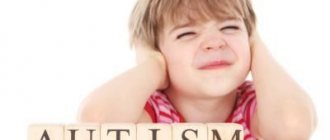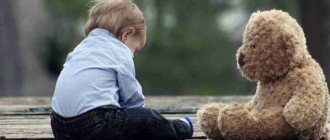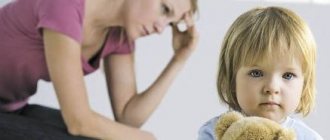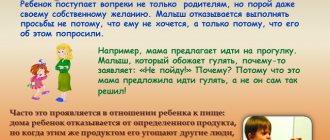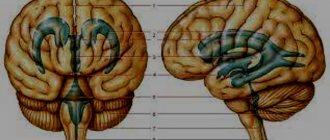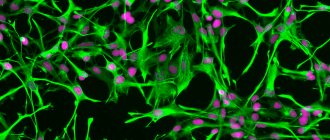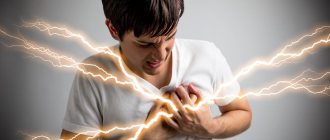Autism is not one disease, but a large complex of neurodevelopmental disorders of various origins, referred to as autism spectrum disorders (ASD) . According to modern data, the frequency of occurrence is 5:1000 (source: Charles Njokiktien "Children's Behavioral Neurology", 2018). It occurs 4 times more often in boys than in girls. The apparent increase in the incidence of ASD (according to old data, the prevalence was 4:10,000) is associated with improved diagnosis and expansion of its criteria. The concept of the spectrum itself appeared relatively recently, in 2013, when the new edition of DSM-5 was adopted; before that, only certain types of autism were considered. According to the International Classification of Diseases, 10th revision (ICD-10), childhood autism (F84.0), atypical autism (F84.1), Rett syndrome (F84.2), Asperger syndrome (F84.5) and several others are currently distinguished forms However, in ICD-11, which has already been adopted in many countries (in our country it will be in force from 2022), “autism spectrum disorder” appears as the main nosological unit, and its forms are distinguished based on existing intellectual and language deficits, for example: “ASD with intellectual development disorder and with mild or absent functional language impairment”, “ASD without intellectual development disorder and with functional language impairment” and others.
ASDs can vary in severity and pathogenetic mechanisms, which greatly influences the clinical presentation, prognosis and social adaptation.
Introduction
Autism spectrum disorders (ASD) are a group of different conditions.
They are characterized by certain difficulties with social interaction and communication. Other features include atypical patterns of action and behavior, such as difficulty moving from one activity to another, focusing on details, and unusual reactions to sensations. The abilities and needs of people with autism vary and may change over time. Some people with autism are able to live independently and productively, while others are severely impaired and require lifelong care and support. Autism often affects educational and employment opportunities. In addition, families providing care and support often have a difficult time. Community attitudes and the level of support provided by local and national authorities are important factors in determining the quality of life of people with autism.
Signs of autism can be identified in early childhood, but the condition is often diagnosed at much later stages.
Autism is often accompanied by other disorders, including epilepsy, depression, anxiety and attention-deficit hyperactive disorder, as well as disruptive behavior. People with autism often have co-occurring conditions, including epilepsy, depression, anxiety and attention deficit hyperactivity disorder, as well as sleep disorders and disruptive behaviors such as self-harm. The intellectual abilities of people with autism vary widely, from severe disabilities to high levels of intelligence.
Symptoms of Autism
Signs of autism in children under 1 year of age
At this age, it is necessary to pay attention to whether the child’s development corresponds to the main stages. Here are a few things to worry about:
- Shows no interest in persons.
- Doesn't look into your eyes, doesn't smile, and it may seem like your baby is looking right through you.
- Doesn't always respond to sounds.
- Doesn't respond to his name, turn to see where the sound is coming from, or show any activity when he hears a loud noise. In other situations, his hearing may seem excellent.
- Doesn't like being hugged or touched.
- Shows no interest in typical children's games.
- Does not babble or show other early signs of talking.
- Does not use gestures as a way of communication.
Signs of autism in children under 2 years of age
Among the most common:
- Doesn't use gestures.
- Doesn't shake his head: yes or no.
- Doesn't indicate what he wants.
- Does not point out objects to show interest in the world around them. By 14 to 16 months, most healthy children will direct your attention to something they are interested in, such as a puppy or a new toy.
- Does not use single words at 16 months or two-word phrases at 24 months.
- Lost verbal or social skills. Used a few words to talk or showed interest in people, but no longer does so.
- Problems with walking.
Signs of ASD in 3-year-old children
Some children develop symptoms of autism in the first few months of life. Others do not show symptoms for up to two years. Mild signs are difficult to detect and may be mistaken for a shy temperament or personality trait.
You may see some of the signs of autism in three-year-old children.
Communication skills:
- does not respond to name;
- avoids eye contact;
- prefers to play alone;
- does not like or avoids physical contact with other people;
- not interested or doesn't know how to make friends;
- has difficulty expressing or talking about feelings and has difficulty understanding others' feelings.
Language and communication skills:
- speech and language skills are delayed (lags behind peers);
- echo conversation - repeating the last few words of a conversation.
Behavioral skills:
- performs repetitive movements;
- toys or other objects are arranged in an organized manner;
- do not like changes in everyday life;
- cyclical repetitions of game movements;
- frequent observation of fire, water and spinning wheels.
Other potential signs of autism:
- impulsiveness;
- aggressive behavior;
- severe tantrums;
- picky eating;
- lack of feeling of fear.
Having any of these signs or symptoms may be normal, but having more than one of them, especially with a speech delay, should be of additional concern.
What are the signs of autism in a 4 year old child?
Signs of autism in children become more obvious as they age.
Your child may show some of the following signs of autism.
Communication skills:
- does not respond to his name;
- avoids eye contact;
- prefers to play alone than to play with others;
- doesn't tell stories;
- not interested in interacting or communicating with others;
- dislikes or actively avoids physical contact;
- grimaces;
- has difficulty understanding other people's feelings and does not express his own well.
Language and communication skills:
- cannot create sentences;
- repeats words or phrases over and over;
- does not answer questions appropriately or follow directions;
- does not understand counting or time;
- changes pronouns (for example, says “you” instead of “I”);
- rarely or never uses gestures or body language such as waving.
Behavioral disorders:
- performs repetitive movements;
- builds toys or other objects in a certain sequence;
- gets upset by small changes in daily life;
- plays with toys the same way every time;
- loves certain parts of objects (often wheels);
- has obsessive interests;
- repeats certain procedures cyclically.
Additional signs of autism in 4 year olds:
- hyperactivity or short attention span;
- impulsiveness;
- aggression;
- hysterics;
- irregular reactions to sounds, smells, tastes, sights, or textures;
- inappropriate emotional reactions.
Signs of autism in children 5 years old
Social Communication Red Flags:
- the child does not share observations or experiences with others;
- generally does not look directly at other people (sometimes called lack of eye contact);
- there may be a lack of speech or unusual speech patterns such as repetition of words and phrases (echolalia), refusal to use “I”, substituting “you” and “you”;
- may be reluctant to be hugged, prefers to be around familiar people, and may seem to treat people as objects and a source of comfort;
- avoids social situations, preferring to be alone;
- there is limited development of play activities, in particular creative play;
- increased tearfulness or unusual lack of crying.
Behavioral red flags:
- frequent, repetitive movements such as shaking or flapping hands, prolonged rocking or spinning of objects;
- having an obsessive interest in certain toys or objects while ignoring other things;
- being extremely resilient to changes in procedures or their environment;
- Difficulty eating – cannot chew hard objects;
- Difficulties often arise with potty training;
- sleep problems;
- irritation or aggression when visiting crowded and noisy places.
Signs of autism at age 6
The signs of autism from 6 to 15 years of age are similar, and in the absence of full correction, they can worsen every year.
Social/emotional problems:
- difficulty creating and maintaining friendships;
- isolated or repetitive play;
- atypical interests compared to peers;
- disobedient or unaware of how his actions affect others;
- expresses severe anxiety, depression, anger, or fear.
Speech skills:
- monotone or unusually formal speech;
- literal interpretation of phrases, does not understand sarcasm or jokes;
- low/poor nonverbal communication skills;
- may shut down and not respond to requests or questions.
Behavioral skills:
- increased interest/hyperfocus on one specific topic, interest, or object;
- intense reaction to changes in everyday routine;
- cyclic hand movements, rocking, or other gestures when upset or excited;
- excessive reactions to touch, textures, pain, or sounds;
- poor motor and coordination skills;
- anxiety, depression, selective silence.
Causes
Based on available scientific evidence, there may be many factors that increase a child's likelihood of developing ASD, including environmental and genetic factors.
Available epidemiological data clearly indicate that there is no causal relationship between autism spectrum disorders and the measles, mumps and rubella vaccine. Previous studies suggesting such a causal relationship were found to have methodological flaws (2)(3).
Likewise, there is no evidence to suggest that any childhood vaccine increases the risk of autism spectrum disorder. Reviews of the evidence on the potential association between the preservative thiomersal and aluminum adjuvants contained in inactivated vaccines and the risk of ASD strongly suggest that vaccines do not increase the risk of ASD.
Psychosomatics of autism in children
Many psychiatrists believe that the causes of autism should be sought in early infancy (from 0 to 8 months). Experts are confident that in most cases the cause of the disease is psychosomatics.
Children close themselves off from the outside world and lose the skill of communicating on a subconscious level, for example, when they lose a sense of safety and security, when they are often surrounded by abuse, shouting, complaints, etc.
In infancy, the psyche of children is very weak and vulnerable, and in order not to experience stress, there is complete detachment from the external environment, from all irritating factors.
Psychotherapists notice that children in a calm and quiet environment begin to show a desire to communicate and feel comfortable.
So, the psychosomatics of autism in children is a kind of protective reaction to stress.
Patient assessment and management
A range of interventions, beginning in early childhood and throughout life, can promote optimal development, well-being and quality of life for people with autism. Timely, evidence-based psychosocial interventions early in life can improve the ability of children with autism to communicate and interact effectively with others. It is recommended that children's development be monitored as part of routine maternal and child health care.
It is important that children, adolescents and adults diagnosed with autism and their carers have access to relevant information, referrals and practical support that is tailored to their individual, evolving needs and preferences.
The health care needs of people with autism are complex and require comprehensive services, including health promotion, care and rehabilitation services. In this regard, cooperation with other sectors, in particular with the education system, employment and social sector, is important.
Interventions for people with autism and other developmental disabilities must be planned and implemented with the participation of the people affected. Care for people with autism must be supported by action at local and community levels to make physical and social environments and relationships more accessible, inclusive and supportive.
New diagnosis covers 'borderline areas' of autism spectrum
Similarity in symptom cluster: Some children who do not have autism may meet criteria for a social communication disorder. Children with social (pragmatic) communication disorder (SCD) share some of the same traits as children with autism, but only some of them, according to a large study covering both conditions. The study results suggest that this condition may be a useful adjunct to diagnostic procedures.
Social communication disorder was first introduced in 2013 in the Diagnostic and Statistical Manual of Mental Disorders, Fifth Revision (DSM-V). The move drew criticism from some experts, who said there was insufficient evidence to distinguish social communication disorder from other conditions such as autism.
Social communication disorder is characterized by social difficulties and communication problems, which are also features of autism. The addition of social communication disorder to the DSM-5 was part of a major diagnostic overhaul that also redefined autism and eliminated the related Pervasive Developmental Disorder Not Otherwise Specified (PDD-NOS).
The researchers feared that some children would be left undiagnosed because of the revised classifications. But a new study shows that a diagnosis of social communication disorder may extend to children with autism who would not otherwise receive an autism diagnosis.
One of the study's leaders, William Mandy, a senior lecturer in clinical psychology at University College London (UK), says: "This concept is even broader and falls on the edges of the autism spectrum." It covers “children who have a high level of social communication problems but who do not meet other criteria for autism.”
The findings may help resolve the debate over whether social communication disorder is a distinct condition with its own underlying mechanisms or simply a mild version of autism. Some researchers have long preferred the second version.
In 2013, Helen Tager-Flusberg proposed that sociocommunication disorder may be a form of language impairment. The new data shows that the diagnosis "falls on the border between autism and non-autism," says Tager-Flusberg, a professor of psychological and brain sciences at Boston University. Still, she said, “talking about clinical diagnoses in categorical terms does not fit with what we know about how the symptoms or personality traits that make up these disorders are actually distributed among people.”
State Comparison
Mandy and his colleagues analyzed the diagnostic records of 1,081 children aged 4 to 18 who attended a London social communication clinic between 1999 and 2013.
Parents of children completed the Developmental, Dimensional and Diagnostic Interview questionnaire, which assesses symptoms of autism. And with it a checklist that includes communication difficulties, social problems and limited interests.
The researchers used these data to develop an algorithm to identify children who meet the DSM-5 diagnostic criteria for autism or social-communication disorder. They also used existing algorithms to identify children who might meet criteria for diagnoses such as autistic disorder, Asperger's syndrome or PDD-NOS in the latest revision of DSM-IV.
Of the 1081 children, 801 met DSM-5 criteria for autism and 88 children met criteria for social communication disorder. The remaining 192 children did not meet the criteria for any of these conditions.
Katherine Lord, head of the Center for Autism and Brain Development at New York-Presbyterian Hospital, considers one of the most important aspects of the study to be an algorithm that distinguishes social communication disorder from other conditions in children. But she cautions that the findings are based solely on parental reports and not on medical observations.
Of children with social communication disorder, 43% would not receive a DSM-IV diagnosis of autism or similar diagnoses. Mandy believes: “Sociocommunication disorder could be said to provide a diagnostic home for this subgroup of children.” The results were published July 25 in The Journal of Child Psychology and Psychiatry.
The findings are consistent with the results of a 2014 study of children in South Korea. This study suggests that many children who are at risk of losing their DSM-5 diagnosis of autism will meet criteria for social communication disorder.
An unbiased approach
“Social communication disorder is not a duplicate of pervasive developmental disorder not otherwise specified (PDD-NOS), as some researchers have suggested,” says Mandy. — Of the 219 children who met DSM-IV criteria for PDD-NOS, 156 had a diagnosis of autism and 26 had a DSM-5 diagnosis of social communication disorder; the remaining 37 children received none of these diagnoses.”
The researchers also compared the children using parent reports of hyperactivity and emotional and social problems. The proportion of children with social communication disorder who had significant problems on this checklist was greater than the control group but less than the autism group. This finding confirms the opinion that social-communication disorder is a condition of moderate severity.
The researchers used a statistical test to test whether the symptoms of social communication disorder formed a cluster. It turns out that it does, but at a frequency that is only slightly higher than would be expected by chance, raising the question of whether social communication disorder is a distinct syndrome.
"It's not yet clear how much of this disorder falls on the spectrum and when it falls on the autism spectrum," says Amy Jo Schwichtenberg, co-director of the Division of Autism at Purdue University (who was not involved in the study). A diagnosis of social communication disorder can be helpful for families seeking help and support services, she said.
Mandy said he is “still wondering” whether social communication disorder is a separate condition from autism. He says scientists should take a closer look at the prevalence of the condition and how it might impact autism treatment.
Sources:
- Mandy W. et al. J. Child Psychol. Psychiatry Epub ahead of print (2017) PubMed
- Kim YS et al. J. Am. Acad. Child Adolesc. Psychiatry 53, 500 – 508 (2014) PubMed
The material presented above is a translation of the text “New diagnosis covers 'borderlands' of autism spectrum.”
Human rights
All people, including those with autism, have the right to the highest attainable standard of physical and mental health.
However, people with autism often face stigma and discrimination: their rights are unfairly denied in health care and education, and their opportunities to participate in society are limited.
People with autism experience the same health problems as the general population. In addition, they may have special health care needs related to ASD and other related conditions. They may be more vulnerable to chronic noncommunicable diseases due to behavioral risk factors such as physical inactivity and poor diet, and are at greater risk of violence, injury and abuse.
People with autism, like the rest of the population, need accessible health services to meet their general health needs, including promotion and prevention services, as well as treatment of acute and chronic conditions. However, compared with the general population, people with autism have higher rates of unmet health care needs. These people are more vulnerable in humanitarian emergencies. The most common problem is that health care providers do not have sufficient knowledge about autism and do not have a good understanding of the condition.
WHO Resolution on Autism Spectrum Disorders (WHA67.8)
In May 2014, the 67th World Health Assembly adopted a resolution on “Comprehensive and concerted efforts for the management of autism spectrum disorders”, which was supported by 60 countries.
This resolution calls on WHO to work with Member States and partner agencies to strengthen national capacity to address issues related to ASD and other developmental disabilities.
- World Health Assembly resolution WHA67.8: Comprehensive and concerted efforts to manage autism spectrum disorders
WHO activities
WHO and its partners recognize the need to strengthen countries' capacity to promote optimal health and well-being for all people with autism.
WHO is making efforts to
- encourage governments to take targeted action to improve the quality of life of people with autism;
- provide advice on policies and action plans to address autism in the broader context of physical and mental health and disability services;
- help improve the capacity of health care providers and providers to provide appropriate and effective care for people with autism; And
- promote the creation of favorable conditions for the lives of people with autism and other developmental disorders and for their participation in society.
